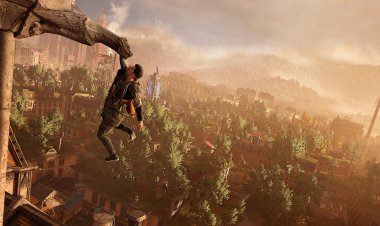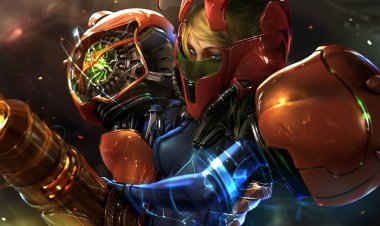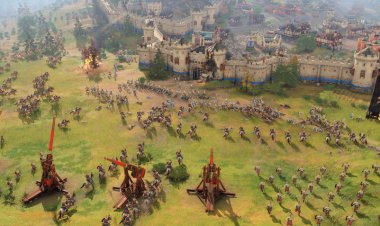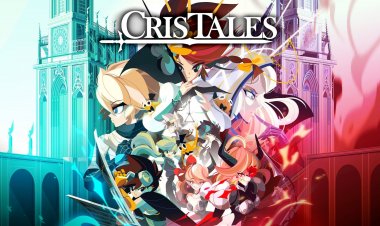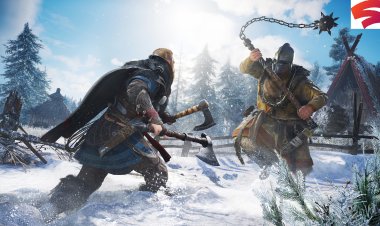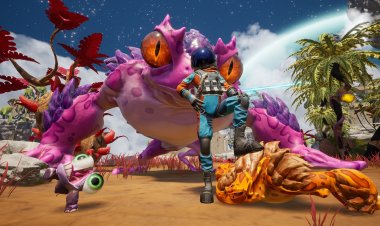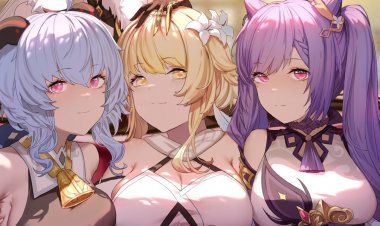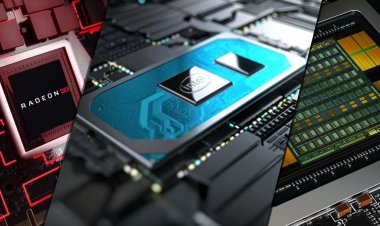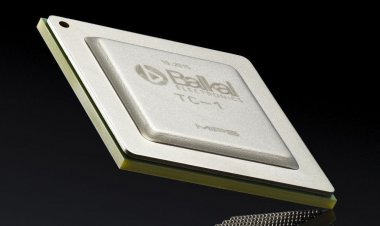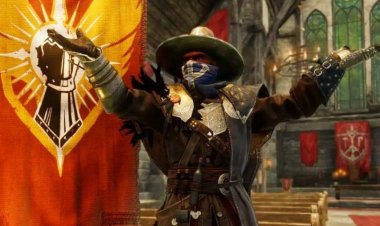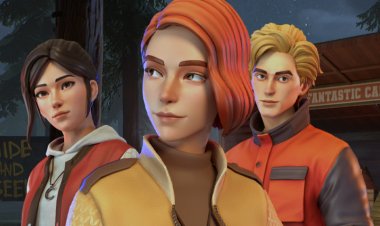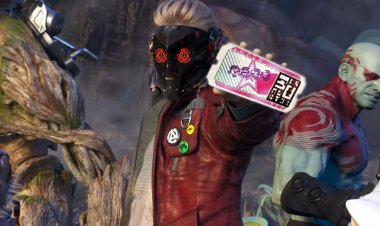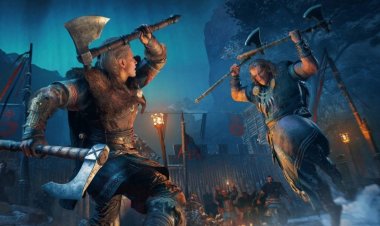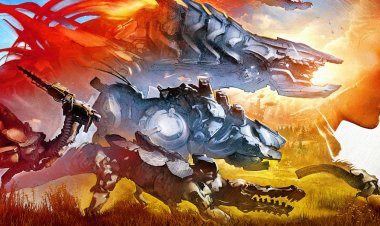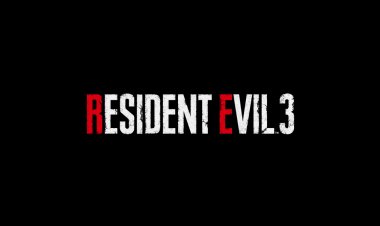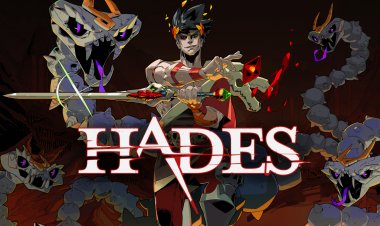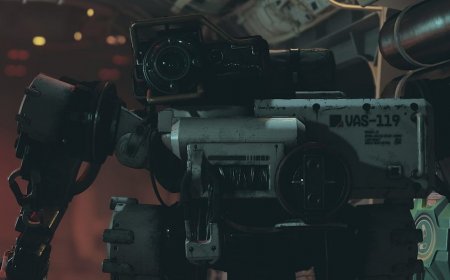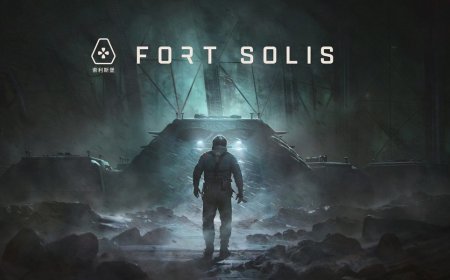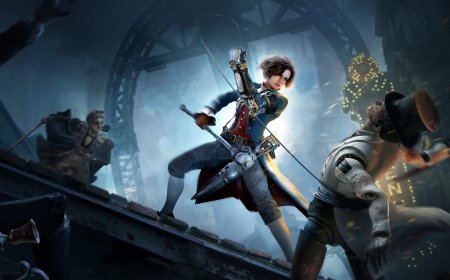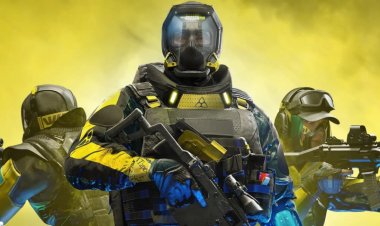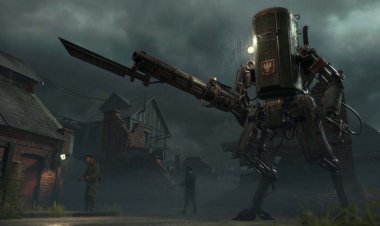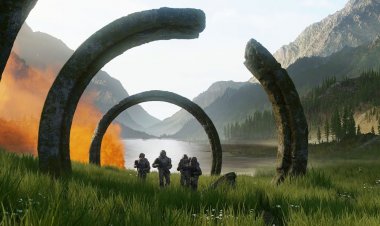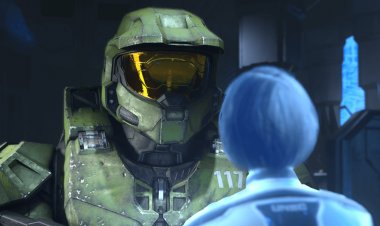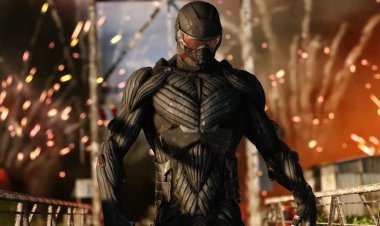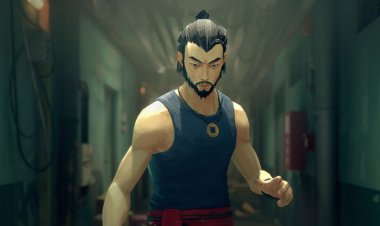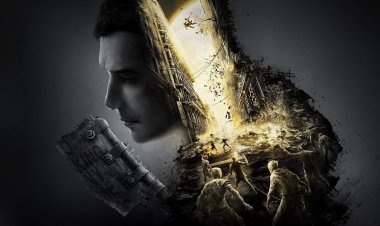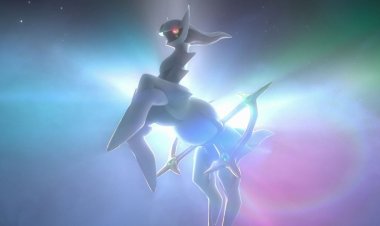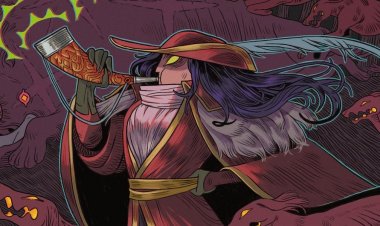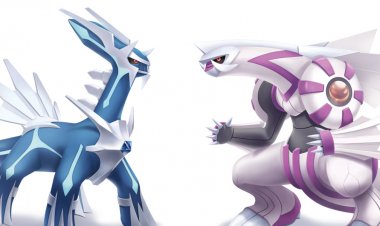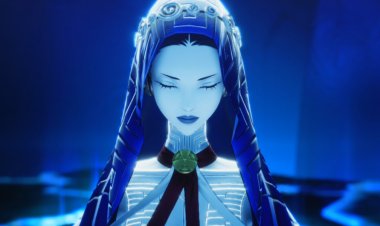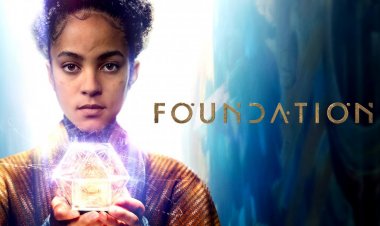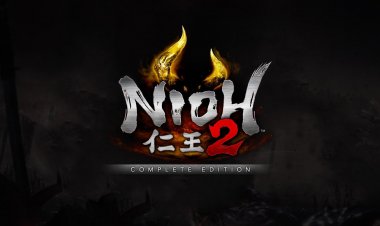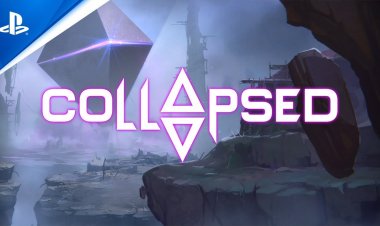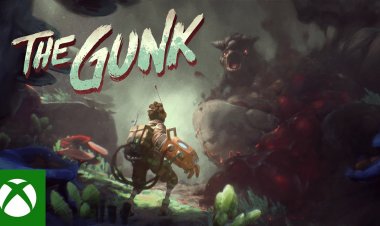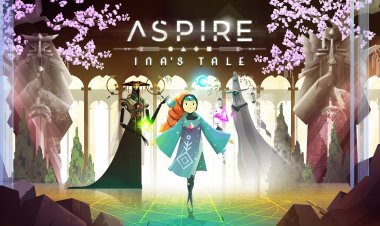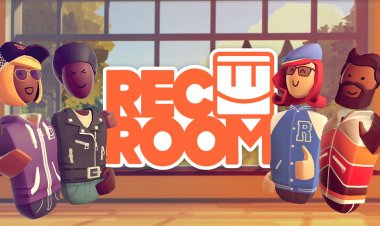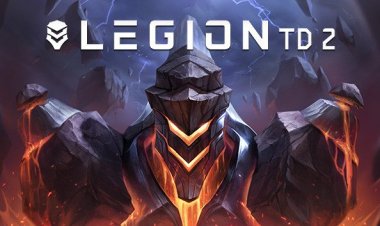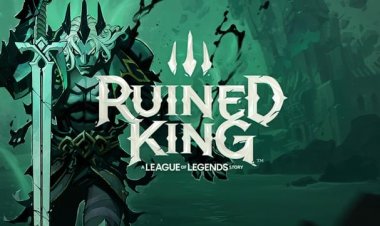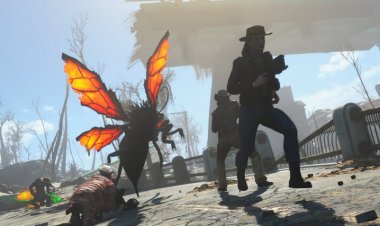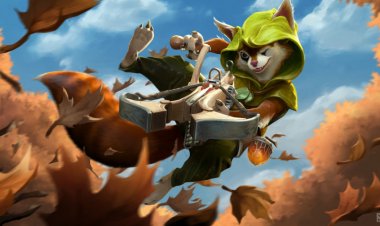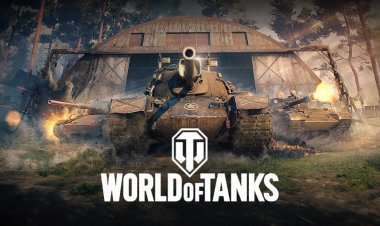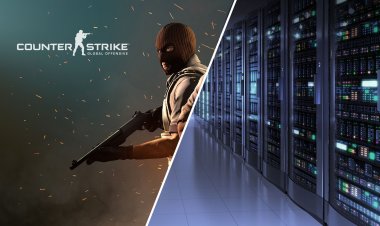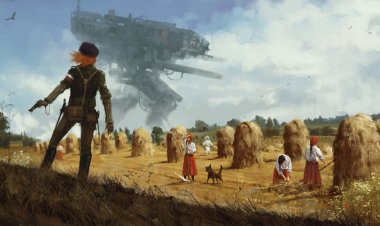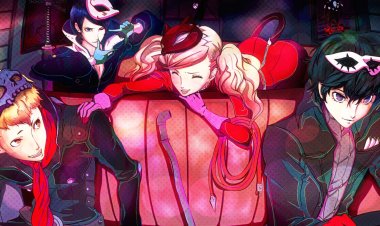Blue Reflection: Second Light - Review
The second part of symbiosis of JRPG and dating simulator about a squad of brave girls - Blue Reflection: Second Light - crept up unnoticed at the end of 2021.
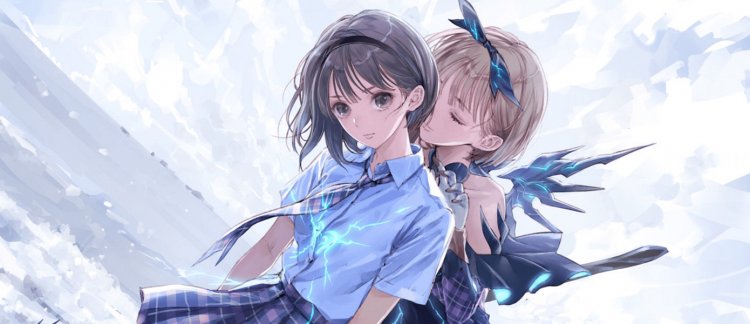
Koei Tecmo's Gust studio has once again decided to take a break from its main Atelier role-playing franchise and please all fans of a strong female friendship in the middle of the apocalypse.
The first Blue Reflection, which debuted in 2017, touched on the story of Hinako, a former ballet star who started attending a new school. She gains the power of a reflector, a carrier of magical abilities, along with her friends Yuzu and Lime. In the course of the story, the girls explore a parallel world, fighting off the attacks of monsters that feed on emotions. Using the power of friendship, they gradually save the world of collective consciousness, gaining the upper hand over the higher entities — the Sephires, which have the most bizarre forms. The project boasted a charming atmosphere in a relaxed atmosphere, which differed from the intense games of the genre, focusing on internecine conflicts.
Second Light is a direct continuation of the first game and the anime Blue Reflection Ray, the events of which are more affected in the second half of the narrative. The authors retell important aspects of the plot of the original so that the players can fully understand the intricacies of the script without having to go through the first part. Events take place in another world with a new set of characters, although it was not without the help of experienced familiar heroes.
The main character of Second Light, Ao Hoshizaki, suddenly wakes up in an unknown place. Instead of the usual educational institution, she finds herself isolated in a mysterious school with three inhabitants - Yuki, Rena and Kokoro.
Having met everyone, the heroine learns that her friends have unfortunately lost their memory and are not aware of what is happening at all. As it turns out, the school is completely fenced off from the outside world by the water around, becoming a kind of oasis. Ao makes the girls think about finding cause-and-effect relationships and a way to get back home. As you might guess, our ward is not in vain the only one with memory and becomes the central figure of events, as you will learn later.
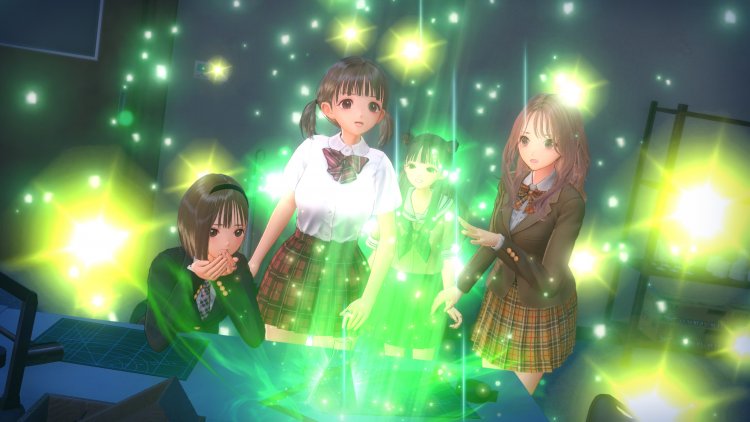
Memories become fuel for emotions, thanks to which the heroines can fight. Descending into the subconscious of each of the girls, together we explore the world woven from episodes of their lives, sometimes not very pleasant and even shameful. Having resolved the situation inside and defeated the boss, who personifies the problematic thought, the party members return an important part of their memory. Thinking about what they have experienced, they trigger the appearance of a familiar character who is dear to them in some way, and he joins us. Thus, piece by piece, the full picture of the plot is restored, allowing us to understand the details of what happened and the true reason for the existence of the school oasis. Oddly enough, but because of this style of narration, the first seven of the eleven chapters introduce the main characters. Diving into their inner worlds, we learn the background of the characters from the most vivid life situations, as well as the reason for their imprisonment at school.
Girls are reflectors - chosen ones with special catalyst rings that are able to connect their thoughts and feelings with those who are hesitating and in turmoil. Although this is a typical template of an anime in the maho-shojo genre, the topics covered in the story are quite sharp. In addition to bullying, which is customary for the society of teenagers, issues of exploitation for profit, death, split personality, loneliness, self-sacrifice, lying for good and many others are raised.
There are ten playable characters in total, and the authors managed to reveal each as a full-fledged unique personality. They have their own character, background, as well as strengths and weaknesses. Of course, the narrative will not reveal everything to you, and in order to get to the juicy details, you will have to perform sidequests and improve relationships.
In fact, the game has a measured pace of narration with a rather schematic gameplay loop. We went through another subconscious, performed side effects, talked to everyone, and so on in a circle. But all this is flavored with a lot of dialogues, funny scenes and, of course, pumping everything and everything, including crafting. The datetime element is at the forefront here and is made at a fairly high level. We have been through many role-playing games with a similar aspect of gameplay, from Persona to Sakura Wars, and we can safely say that a very good balance is maintained here. Second Light does not drown players in tons of abstruse chatter over and over again and does not force them to grind dull activities for the sake of scenes. Among other things, you will constantly come across joint scenes with characters who are quite generously placed around the academy. That's where it turns out whose turn it is to cook, the way books are kept in the library, the difficulties of studying and other similar things. Of course, relationships are mostly pumped through errands and dates, invitations to which you receive after completing sidequests and as you progress through the campaign. There are no restrictions, and you can safely move forward in amorous affairs with each of the partners. By the way, sometimes in dialogues you will be given a choice of an answer in the spirit of "Which side to take?". In addition to the funny outcome of the scene, depending on the chosen girl, you will get an increase in the relationship.
It is noteworthy that when a high level of trust is reached, the heroines will begin to hold hands, and then indulge together in bed, hot springs, when taking a shower, and so on. Confessions, as they say, are attached, in the most unexpected places, but do not expect anything too serious and frank, because the title has a low age rating. Nevertheless, the romantic moments are quite well furnished, and it is pleasant to watch the sweet courtship, given the path they have traveled together.
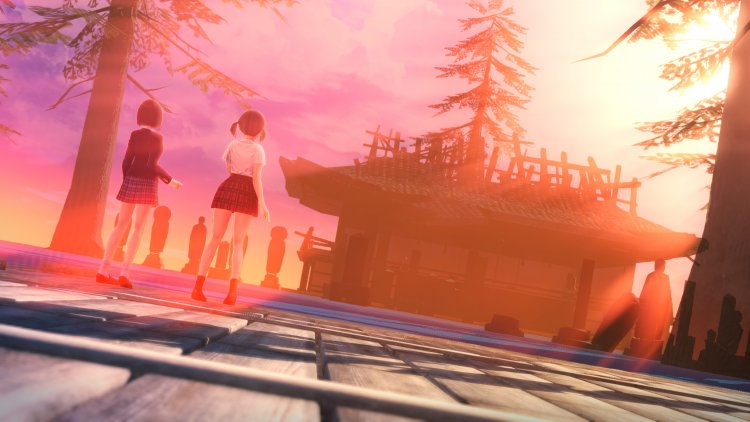
In terms of monitoring the execution of content, the authors have made a visual system. The game constantly notifies through the interface and audio signals about the progress of tasks, as well as on the completion of the quest, when you can already go to take it. At the same time, the mechanics of rapid movement between the hub school and the so-called layers of the world always work — you can leave at any time, which is very useful.
It's interesting to follow the story as a whole, revealing riddle after riddle, but the finale eventually leaves an unpleasant aftertaste. Without going into spoilers, we note that the authors did not fully disclose the meaning of several aspects regarding the characters that we were told about from the very beginning. In addition, one important point remained overboard, hanging by a silent question. Perhaps this is a groundwork for a sequel, but it would be better if the developers created a full-fledged and finished work. It seemed that all the resources were spent on working out the characters, watching the relationships of which is always fascinating.
The combat system is definitely a real jewel in the crown of the game. It came out not only moderately complex, when it's nice to engage in constant microcontrol with a number of options, but also quite cheerful for turn-based battles. Involuntarily you catch yourself thinking how nice it is to experiment and change active fighters here. It is a pity that the short content does not allow the combat component to be fully revealed, but let's talk about everything in order.
Enemy models are visible on the map, and you enter the battle in a separate arena against the background of the terrain. If you hit the enemy with a weapon before coming into contact with him, you will get an advantage in the order of the turn. Alas, the authors did not provide for the combination of encounters, as in other JRPGs, so you will have to fight one set of enemies at a time. Sometimes this leads to curious situations - as soon as you have dealt with some monsters, another model immediately crashes into you nearby, without even giving you a swing. This is also strange because skirmishes can involve both one and several monsters at the same time.
Instead of the usual mana and other types of resources, the main essence here is ether. Generated by the feelings of the girls-reflectors, it affects the speed of filling the timeline of the action - the local analogue of ATB from Final Fantasy. After reaching a certain numerical value, you can apply a skill to choose from, or use an item, or you can just wait it out further. When performing an action, what is happening is paused until a command is selected.
However, the maximum fill level is limited and grows only when you actively fight using skills. However, if you wish, you can accumulate action points and apply several abilities at once at a time, if the amount is enough for the cost. But the game encourages aggressive behavior due to a number of conditions. The main thing is to strengthen the initial skills by increasing the ethereal level, indicated by a number next to the portrait, and building combo chains. With each hit, the damage multiplier increases, but be vigilant — if the enemy casts a powerful reception, the combo will be interrupted and the multiplier will roll back to the previous level. You can save the current value of the chain using the defense command or skills that allow you to simultaneously attack and defend against interruption. Upon reaching the third ethereal level, according to the precepts of maho-shojo, girls dress up in special suits of reflectors - from elegant dresses to improvised armor and punk braids with boots. Everyone has their own individual image, pleasing to the eye. The magic form enhances the parameters and gives access to cool skills. Alas, but there is some fly in the ointment lurking here — the most powerful skills, which are accompanied by stylish animation, are also one of several available AOE attacks. As a result, the lion's share of the game you hit only one goal per character's turn. Not to say that it somehow constrains, because the very speed of attacks is quite high and you can quickly do blow after blow. But I would like to always have the whole arsenal of skills at hand, especially when you have to grind ingredients for crafting.
One of the nice life hacks of the combat system is the synchronization of animations of techniques. You can combine both allied attacks for greater efficiency or interrupt the enemy at the moment of movement. In addition, the time of filling the action line is always honestly considered. That is, if you have spent only 500 of the available 1000, then the next move will begin to be filled with the remaining amount. The secret of the effectiveness of battles lies in the rapid destruction of the enemy, otherwise you will be doomed to constantly roll back on the timeline. The main tools here are the exploitation of vulnerabilities, the use of critical attacks and the layering of a series of debuffs. Moreover, if the enemy seems thick-skinned and immune to ailments, it is possible to force him to open up to certain elements or statuses. It is here that various useful properties of different skills come to the rescue. The secret of the success of quick and painless fights lies in the correct juggling of the sequence of techniques.
At some moments, when fighting with large opponents, you can engage in one-on-one combat when the camera is approaching and you control only one character. Here, the speed of filling in actions increases noticeably, and you need to repel the onslaught in a short period of time. Attack, dodge, boost and counter-strike commands are available. Both your and enemy strikes are more powerful, so you should concentrate on timing and animating the enemy. Yes, at this time the game flows into full realtime without any pauses. Quite an interesting solution that contributes to the acceleration of dynamics in battles.
Although there can be only three characters actively participating in the fights, one of the party members can be put in the support slot. In the course of filling in the ether scale, he will use support abilities with a certain probability, and if you wish, he will be able to use a consumable or replace an active team member — including a dead one. The game is very gentle, so the experience is distributed here even to the heroines who find themselves in a coffin. Those who do not take an active part in the battles will also be pumped to the full. Alas, attributes are distributed automatically, and you unlock new skills in the course of pumping relationships, getting talent points.
There are a great many talents - they are divided into four categories, including both parameter increases and skills of different types, as well as speeding up the speed of filling the scale, improving the crafting process and other similar elements. The game allows you to set the autoboy mode for the left and right characters, leaving only the central one under control. But keep in mind that they will not be treated until the critical values of the health level. Although, if desired, you can interrupt the automatic distribution of commands at any time and intervene. Interestingly, all the heroes are balanced by types of attacks — they have a certain number of melee and ranged strikes, regardless of their type of weapon. This also applies to buffs and debuffs, some of which can be given to any character - through special items.
The equipment here is called "fragments of emotions". Each of the wards has a certain number of slots for these fragments, the amount of which you can increase with the help of talents. Each fragment has a certain property that can both automatically produce an effect and work under certain conditions specified in the description. There are a huge number of them and they noticeably simplify your life both in battles and in everyday affairs. Each of the fragments has a certain cost, expressed in the number of occupied slots. By themselves, they open up as the relationship between the girls improves. Thanks to them, you can even make a character with a different specialization a healer.
Regarding the content in the game, not everything is as rosy as it may seem at first. The locations themselves are on average three in the world, and they are not only mainly corridor, but also very small in volume. There is no exploration as such, but there is enough backtracking if you take up optional tasks. And a little bit will have to be done. The fact is that pumping and crafting are based on the farming of components, and relationships are pumped, including through assignments on maps. Sometimes you can find closed zones that open either with the help of special things, or by unlocking the necessary memories. The mentioned side effects are a classic set of kill-bring-give, multiplied by crafting.
Among the assignments of the partners there are masked thieves marked with an icon, which give the opportunity to engage in another type of activity — stealth. The idea is not bad, but the level of implementation sometimes causes annoying sensations. On the one hand, you clearly see the enemy's viewing cone, and on the other hand, visibility behind obstacles is calculated in places in an incomprehensible way. We were often caught in non-obvious places behind cone-shaped and other types of shelters — only rectangular and square objects are obvious. And for some reason, massive enemies often cheat, where there are many similar buildings. In addition, the places where you need to climb can play a cruel joke. Right in the middle of the stairs, you can run into the monster's gaze and have to start over. And checkpoints are created only after half the distance traveled to the common goal.
The crafting process here is very friendly and visual, contributing to a meditative pastime. But not as complex as in the Atelier series of games from the same Gust. Recipes open automatically as you progress through the storyline, activities, as well as collecting new items in locations and meeting new enemies. If you do not have the right recipe, the game will kindly provide a hint — the in-game encyclopedia here is generally very informative and will not let any player get confused. However, this is not all — having collected the necessary number of components, you can select the participants of the process immediately before crafting. Since one of the branches of talents of each colleague is responsible for crafting, then you can radically improve the item you receive or increase the amount of finished units at a time. All this is accompanied by detailed information and pictograms.
Another area of crafting is the expansion of the school grounds. There is a lot of free space around the academy, where it is possible to erect various structures that give useful effects. They can be either local, which increase any parameters or protect against debuffs, or global, where you can increase the speed of filling the scale, the level of drop and the experience gained. Some of them work automatically, and some must be manually activated with the help of special items. All buildings give upgrades, enhancing and increasing the number of effects. And here, too, not everything is perfect. The fact is that with all the variety of resources, the authors force you to farm certain types day and night over and over again. For example— the very first kind of tree that is obtained from sand from the starting world. The game designer who came up with such an attraction definitely hates someone.
Interestingly, you don't need to grind the character levels themselves. The maximum level can be obtained even without completing all the quests, but that's not even the point. And the fact is that when pumping school buildings, talents and equipping powerful fragments, girls turn into real death machines. Literally - the high speed of filling the ether will allow you to transform very quickly and demolish everything in your path.
If we talk about enemies, the most interesting both from the point of view of battles and design in general, were the Sephirs — the highest beings in the Blue Reflection universe. The rest of the bestiary consists mainly of familiar creatures, like animals and robots - it's strange that the authors didn't have a fantasy for something more interesting.
If desired, in the locker room, each heroine can change her casual clothes, which will be displayed in all videos and dialogues.
Blue Reflection: Second Light has a pleasant musical accompaniment with a predominance of electronic music crossed with keyboard instruments. Cheerful melodies with a fast tempo resemble tracks from Final Fantasy XIII, playing while traveling by Pulse, which is more of a plus than a minus. I would like to have more similar compositions in JRPG, where sometimes there is too much orchestra or guitar. Coupled with the visual style and calm pacing, the soundtrack fits perfectly into what is happening and contributes to the atmosphere. The sound accompaniment here plays a relaxing role rather than warns of threats, as in many other role-playing games. This is due to the emphasis on the gradual awareness of the situation of the characters as they pass through the subconscious and focus on dialogues, where music acts as a background to give expression to scenes. As for the voice acting, the game offers only the original Japanese soundtrack, and only important plot points and romantic scenes are voiced here, which are activated when the level of relationships increases.
The graphic design of the second part is not far removed from the first Blue Reflection. In fact, the models of the heroines look neat, the detailing of the enemies is already worse, and the environment is very poor — a typical picture for budget Japanese JRPGs. The range of drawing locations has become noticeably higher, but the creators did not get rid of the noticeable blurring of objects at a distance. At the same time, the combat effects look nice, and sometimes even very spectacular - when using ultimatum techniques. Photo mode is present.
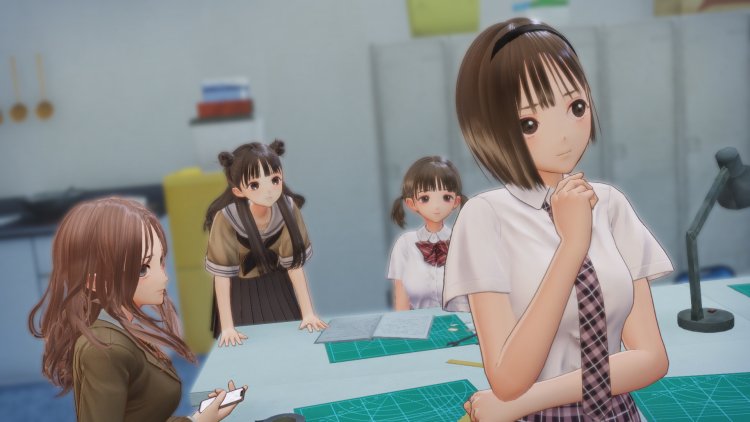
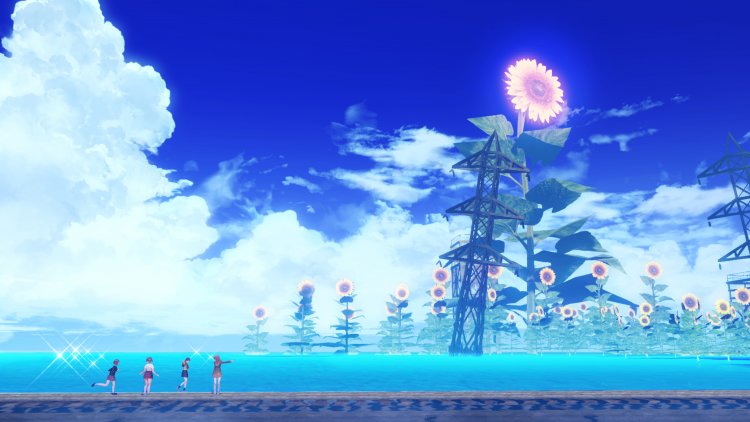
With the second Blue Reflection, Gust studio took a step in the right direction, but like the first part, the second is full of white spots. Starting from the graphics and ending with the lack of imagination in terms of bestiary and side quests. However, in the end, we have a colorful and relaxing story about friendship and love with thoroughly prescribed female characters. And there is also a rather entertaining combat system here, where you constantly want to try different approaches and shuffle partners. Fans of this kind of games should consider buying at a discount.
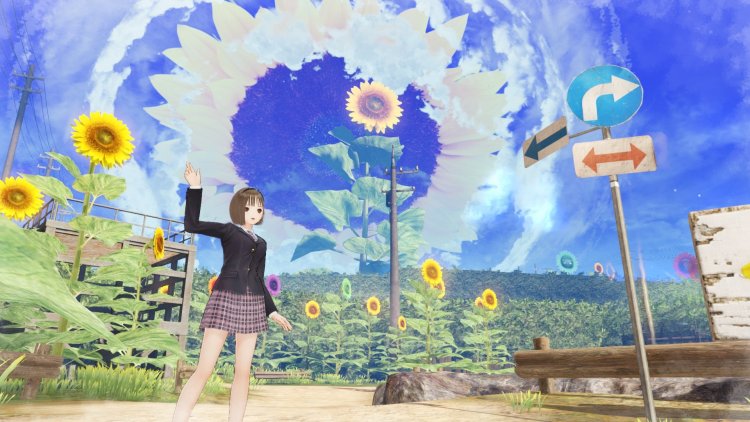
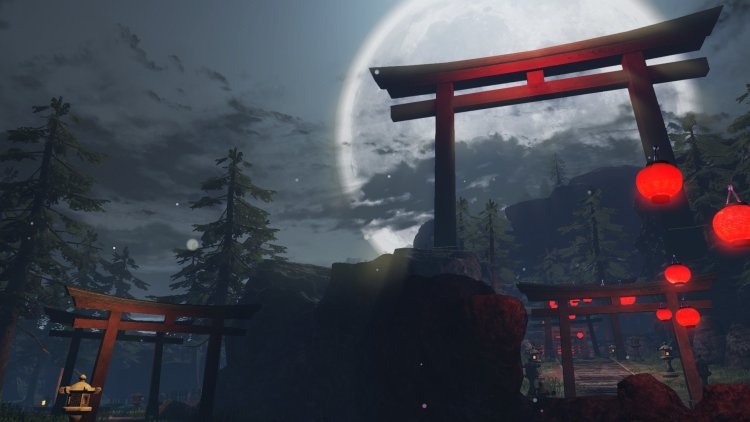
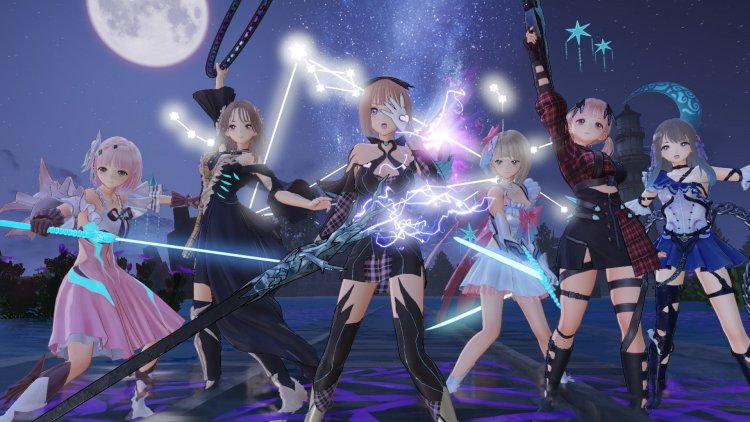
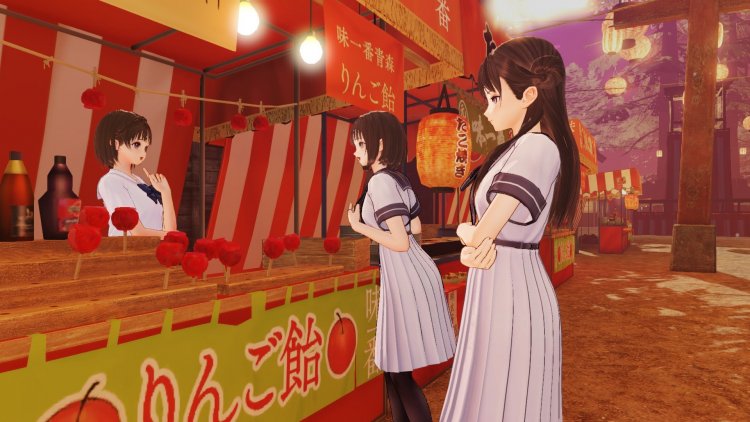
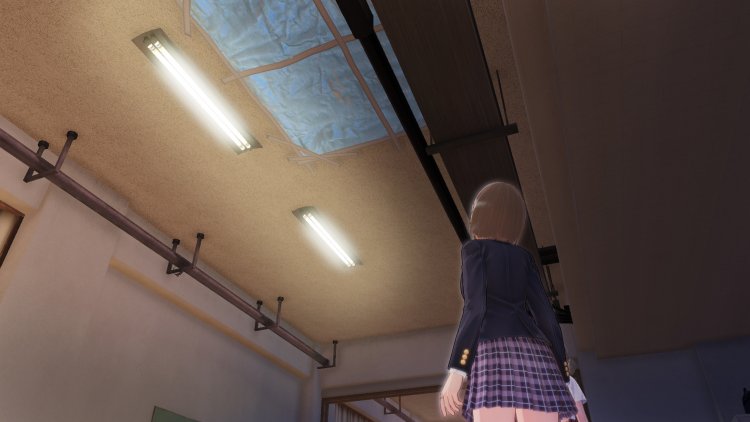
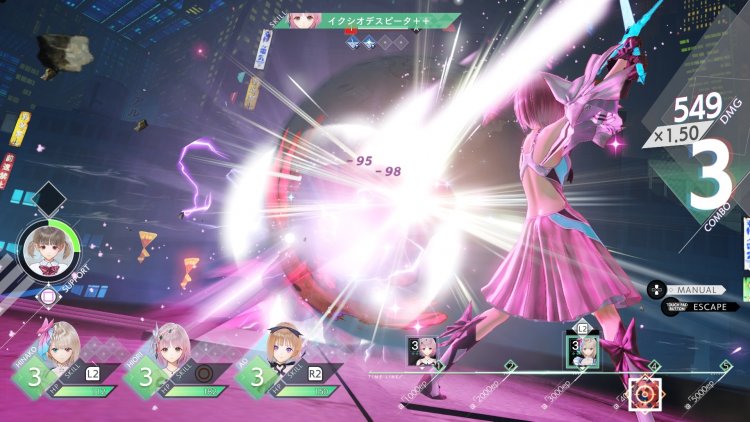
What's Your Reaction?













